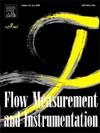New flow field construction method based on vessel-mounted ADCP data
IF 2.3
3区 工程技术
Q2 ENGINEERING, MECHANICAL
引用次数: 0
Abstract
Acquiring flow structure characteristics in specific areas and constructing large-scale flow fields are necessary tasks for analyzing the evolution of river channels and developing water conservancy projects. The Acoustic Doppler Current Profiler (ADCP) is commonly used to observe large-scale flow fields in rivers. However, the conventional method of constructing flow fields has several challenges, including inaccurate estimation of flow velocity, distorted identification of flow structure in specific areas, and inability to explain the sediment transport mechanism. Therefore, it is necessary to explore a new method for large-scale flow field construction. This paper utilizes vessel-mounted ADCP data with dense interval single transects, along with single-beam data, to perform optimal flow velocity estimation based on the actual spatial positions of radial velocities. Experiments demonstrate that the method proposed in this paper is superior to the conventional method in estimating magnitude and direction of flow velocity at different water depths. Furthermore, the flow field analysis using the proposed method successfully identifies flow features such as plunging flow and secondary flow. The maximum difference in grid velocity exceeds 0.2 m/s, while the root-mean-square error is reduced by 50 % compared to the conventional method. Results reveal a significant correlation between eddies and scour holes, providing a novel perspective on understanding the sediment transport mechanism of scour holes and exploring the relationship between vertical structures and localized scour.
基于船载ADCP数据的流场构建新方法
获取特定区域的水流结构特征,构建大尺度流场,是分析河道演变和开展水利工程的必要任务。声学多普勒水流廓线仪(ADCP)是观测河流大尺度流场的常用仪器。然而,传统的流场构建方法存在着流速估算不准确、特定区域流结构识别失真、无法解释输沙机制等问题。因此,有必要探索一种大型流场构建的新方法。本文利用船载ADCP数据和单波束数据,基于径向速度的实际空间位置进行最优流速估计。实验表明,该方法在不同水深的流速大小和方向的估计上优于传统方法。此外,利用该方法进行的流场分析成功地识别了突降流和二次流等流动特征。网格速度最大差值超过0.2 m/s,均方根误差比传统方法减小50%。研究结果揭示了涡旋与冲刷孔之间的显著相关性,为理解冲刷孔输沙机制以及探索垂直结构与局部冲刷的关系提供了新的视角。
本文章由计算机程序翻译,如有差异,请以英文原文为准。
求助全文
约1分钟内获得全文
求助全文
来源期刊

Flow Measurement and Instrumentation
工程技术-工程:机械
CiteScore
4.30
自引率
13.60%
发文量
123
审稿时长
6 months
期刊介绍:
Flow Measurement and Instrumentation is dedicated to disseminating the latest research results on all aspects of flow measurement, in both closed conduits and open channels. The design of flow measurement systems involves a wide variety of multidisciplinary activities including modelling the flow sensor, the fluid flow and the sensor/fluid interactions through the use of computation techniques; the development of advanced transducer systems and their associated signal processing and the laboratory and field assessment of the overall system under ideal and disturbed conditions.
FMI is the essential forum for critical information exchange, and contributions are particularly encouraged in the following areas of interest:
Modelling: the application of mathematical and computational modelling to the interaction of fluid dynamics with flowmeters, including flowmeter behaviour, improved flowmeter design and installation problems. Application of CAD/CAE techniques to flowmeter modelling are eligible.
Design and development: the detailed design of the flowmeter head and/or signal processing aspects of novel flowmeters. Emphasis is given to papers identifying new sensor configurations, multisensor flow measurement systems, non-intrusive flow metering techniques and the application of microelectronic techniques in smart or intelligent systems.
Calibration techniques: including descriptions of new or existing calibration facilities and techniques, calibration data from different flowmeter types, and calibration intercomparison data from different laboratories.
Installation effect data: dealing with the effects of non-ideal flow conditions on flowmeters. Papers combining a theoretical understanding of flowmeter behaviour with experimental work are particularly welcome.
 求助内容:
求助内容: 应助结果提醒方式:
应助结果提醒方式:


